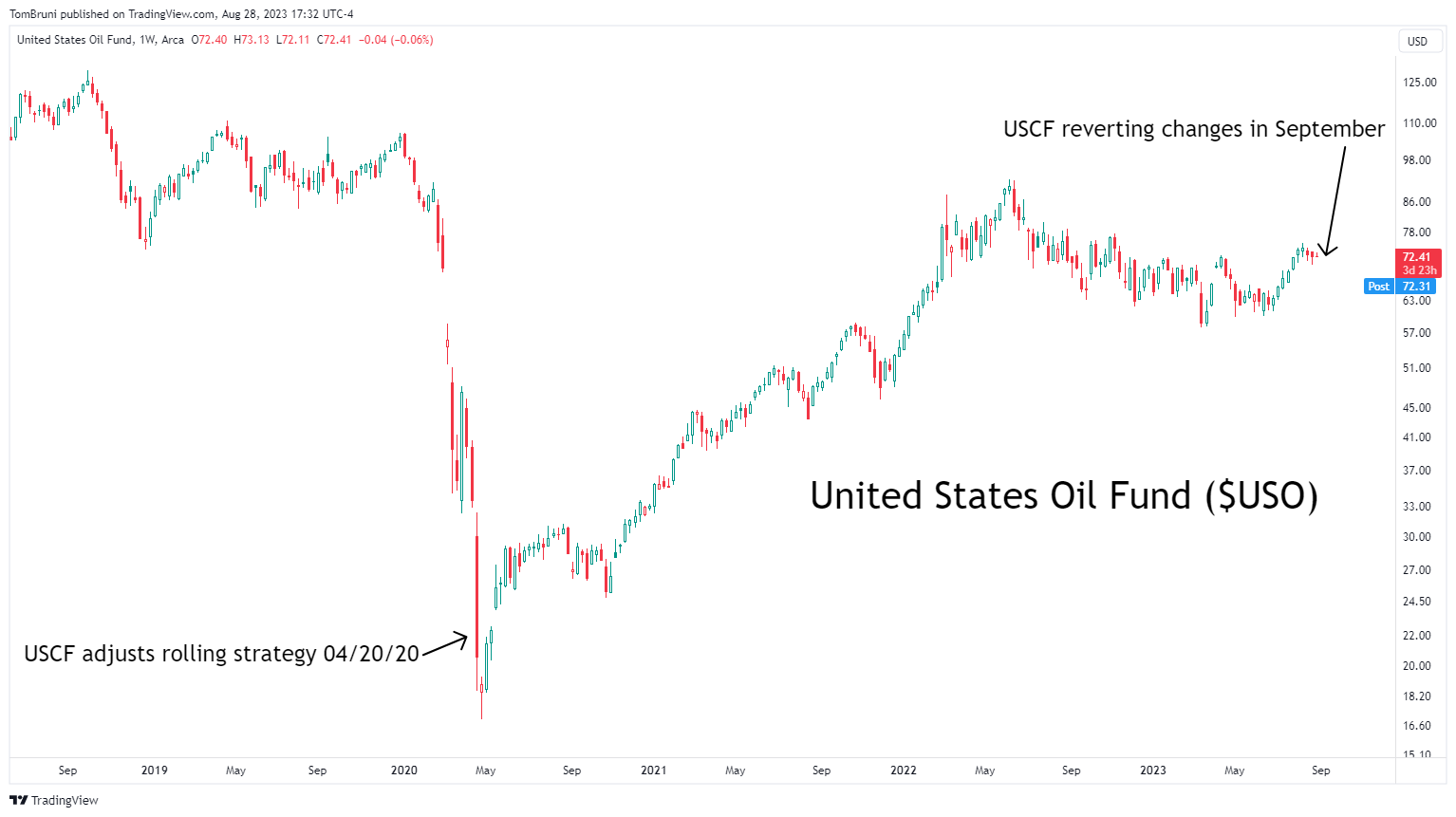The U.S. oil market is returning to its pre-pandemic norms, at least according to the manager of the popular oil ETF $USO. 🛢️
The United States Oil Fund ($USO) has been around since April 2006 and is a futures-based ETF that looks to track the price of U.S. crude oil. It does so by purchasing the front-month sweet light crude oil (WTI) contract, holding it, and then rolling its holdings to the following contract before expiration.
That was how it operated until the COVID-19 pandemic sent the oil market into a tailspin. As a result of the drastic selling in April 2020, futures prices went negative and left the United States Oil Fund with more than 25% of that month’s futures contract. 😮
Because of that, it inadvertently violated Commodity Futures Trading Commission (CFTC) regulations that no single investor can purchase over 25% of a given futures contract. As a result, asset manager United States Commodity Funds (USCF) committed to spreading the ETF’s exposure out across several futures contracts. 🗓️
The move helped it comply with regulations and diversify its risk in a turbulent market, but it also reduced the fund’s ability to track front-month (AKA spot) oil prices accurately.
And the fund has been operating that way for the last three years.
However, it apparently feels as if the market is stable enough to return to its old ways of operating. Today, it announced that beginning in September, it will start reallocating most of its holdings to the front-month oil contract rather than spreading out its exposure. ◀️
After this process is completed, this popular trading vehicle will more accurately track the spot price of oil. But it will also be exposed to outsized tail risks, as we saw during the pandemic.
We’ll have to wait and see if traders pile back into it as energy remains atop everyone’s radars after a strong 2021 and 2022. 🗓️

